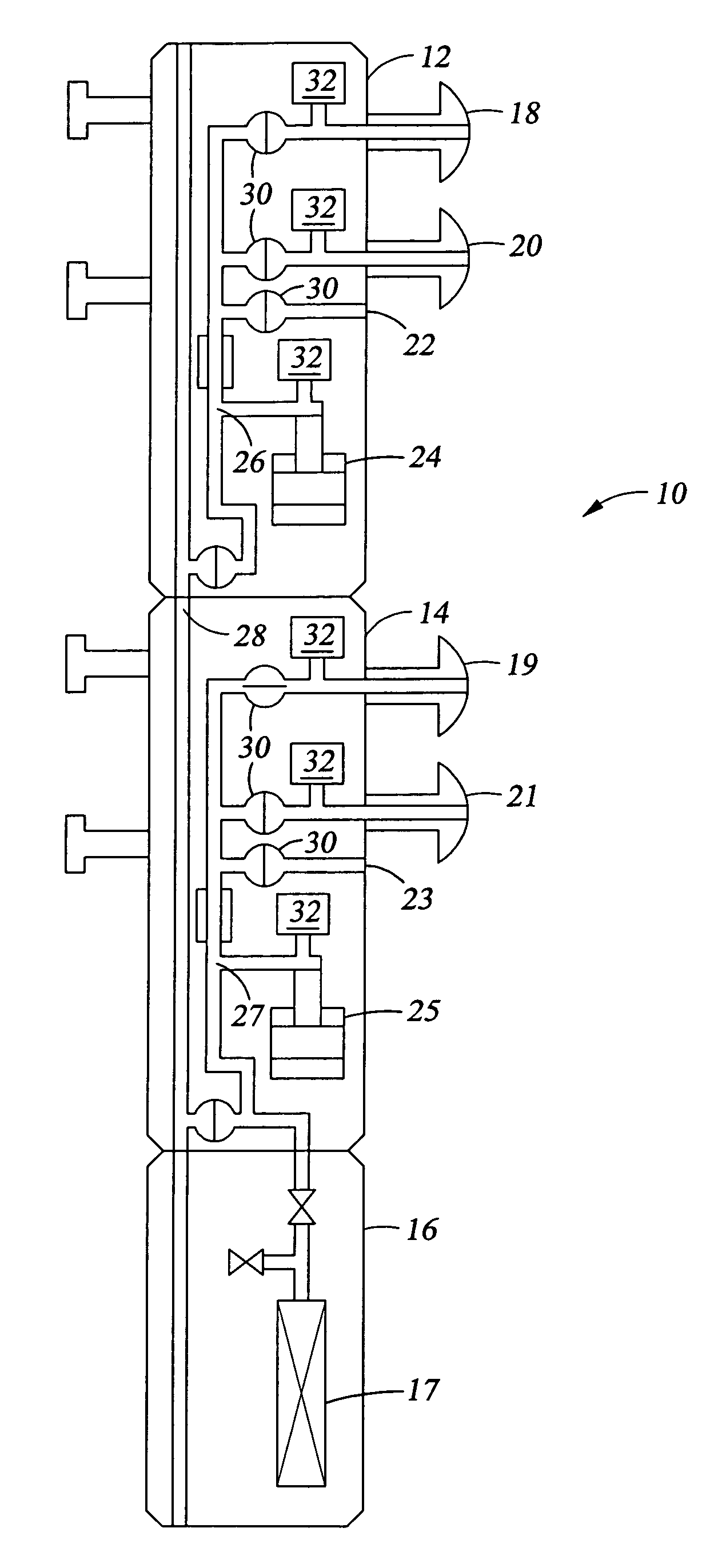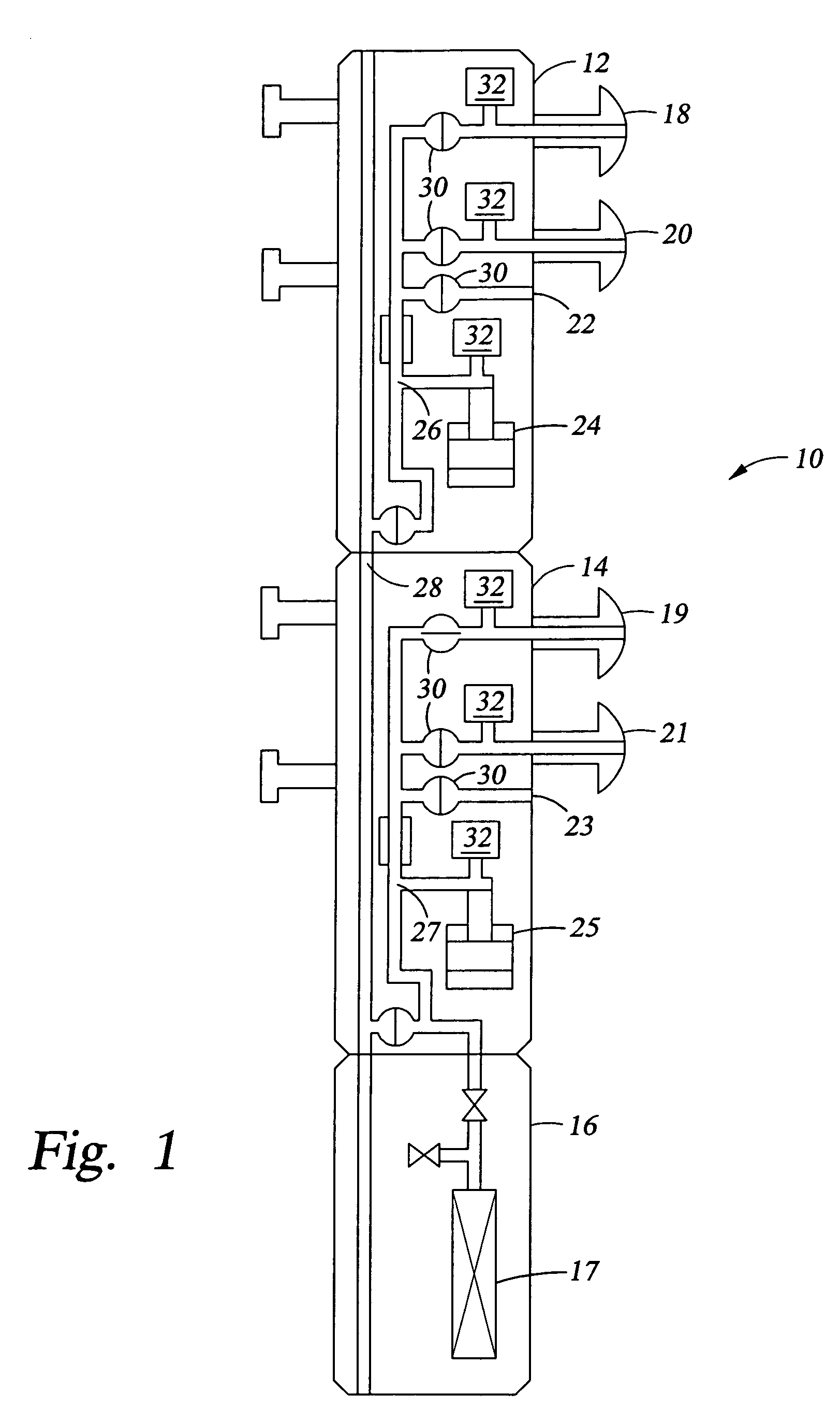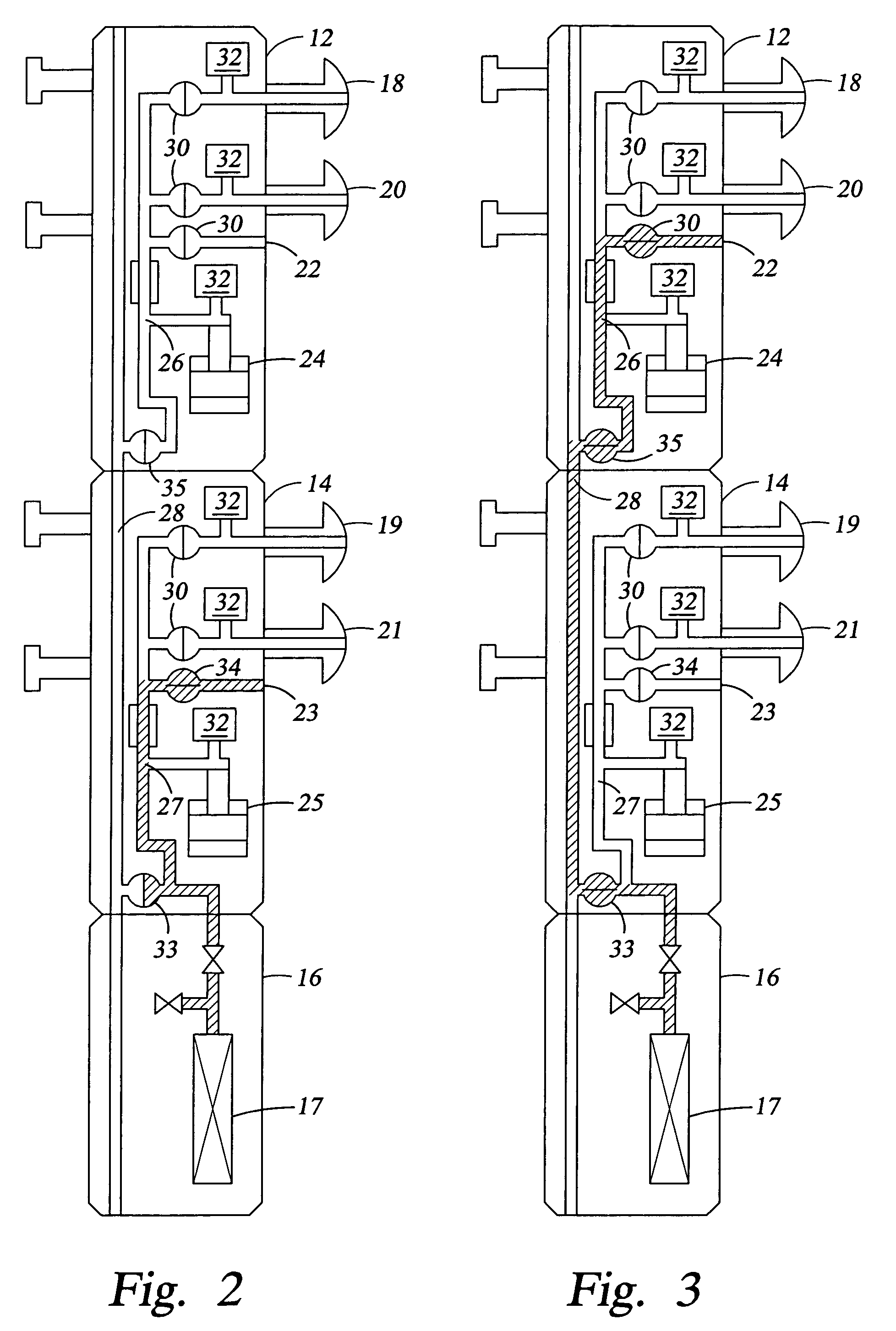Determining gradients using a multi-probed formation tester
- Summary
- Abstract
- Description
- Claims
- Application Information
AI Technical Summary
Benefits of technology
Problems solved by technology
Method used
Image
Examples
Embodiment Construction
[0016]Embodiments of the invention include methods for operating multi-probed formation testers to determine a fluid density gradient in the formation. The probes of the multi-probed formation tester are connected to a pressure gauge through a flowline that establishes a differential height between the probes. In some embodiments, a gradient of the fluid density in the flowline is determined as a function of the gradient of fluid density in the wellbore. The flowline fluid density gradient is then used to determine a formation fluid density gradient as a function of the flowline fluid density gradient.
[0017]The preferred embodiments provide methods for calculating pressure gradients in multi-probed formation testers that compensate for flowline differential pressure created by varying distances between the tester probes and the pressure sensors. One method includes determining the wellbore gradient by taking a pressure measurement from the wellbore from two pressure ports in the flo...
PUM
 Login to View More
Login to View More Abstract
Description
Claims
Application Information
 Login to View More
Login to View More - R&D
- Intellectual Property
- Life Sciences
- Materials
- Tech Scout
- Unparalleled Data Quality
- Higher Quality Content
- 60% Fewer Hallucinations
Browse by: Latest US Patents, China's latest patents, Technical Efficacy Thesaurus, Application Domain, Technology Topic, Popular Technical Reports.
© 2025 PatSnap. All rights reserved.Legal|Privacy policy|Modern Slavery Act Transparency Statement|Sitemap|About US| Contact US: help@patsnap.com



